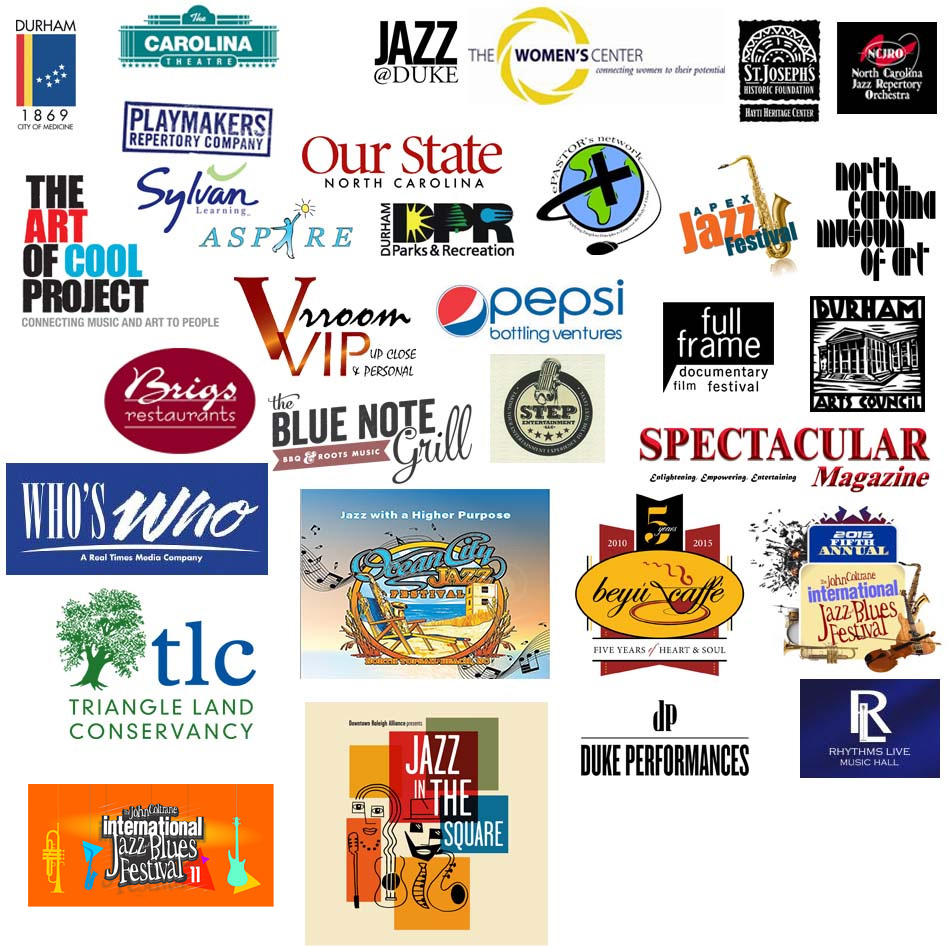Author Archive
Sunday, February 10th, 2013
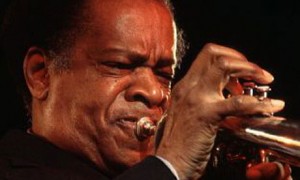 Trumpeter, composer and educator Donald Byrd, one of the most important, widely recorded and versatile jazz musicians to come roaring out of Detroit during the city’s golden age of bebop in the 1950s, has died at age 80. Trumpeter, composer and educator Donald Byrd, one of the most important, widely recorded and versatile jazz musicians to come roaring out of Detroit during the city’s golden age of bebop in the 1950s, has died at age 80.
Byrd’s death, which had been the subject of rumors for several days, was confirmed by his nephew, pianist Alex Bugnon, who posted on Facebook that his uncle died Monday in Delaware, where he lived. Bugnon also wrote that his funeral will be held in Detroit sometime next week.
Byrd’s career traced a remarkable arc, from jazz stalwart in the 1950s and ’60s to best-selling R&B star in the ’70s to the halls of academia as part of the pioneering first wave of African-Americans to teach black music in universities. He earned numerous advanced degrees, mentored several generations of young musicians and became an outspoken authority on African-American history and music.
Born Donaldson Toussaint L’Ouverture Byrd II, on Dec. 9, 1932, he attended Cass Tech, where he studied classical music and was mentored by the legendary band director Harry Begian, a famous disciplinarian. “He’s the one that set the tenor for our lives, for the rest of our lives,” Byrd told the Free Press in 2003.
Byrd played trumpet in military bands during a stint in the Air Force from 1951-53, before graduating from Wayne State University in 1954 with a music degree. Like many of the best young Detroit jazz musicians, he also studied with Detroit’s reigning bebop guru, pianist Barry Harris.
Byrd had a jackrabbit start to his career, landing in New York at age 22 and quickly becoming a ubiquitous presence. He performed and recorded with the cream of the emerging hard bop idiom, including Art Blakey, Max Roach, Sonny Rollins, John Coltrane, Red Garland, George Wallington and countless others.
Byrd’s warmly burnished sound, fluent technique and aggressive-yet-graceful swing was rooted in the style of Clifford Brown, but his gangly, rhythmically loose phrasing was a unique calling card right from the get-go. As Byrd matured in the late ’50s and early ’60s, he tempered his hummingbird flourishes with a cooler sensibility and phrasing that recalled Miles Davis.
Byrd recorded prolifically both as a sideman and a leader, appearing on scores of recordings on the Savoy, Prestige, Riverside and Blue Note labels. He led a feisty quintet with his old pal from Detroit, baritone saxophonist Pepper Adams, from 1958-61. Byrd also gave a young pianist from Chicago named Herbie Hancock his first major exposure by hiring him in 1960.
As a composer, Byrd was proficient in church-inspired shouts, funky and sophisticated blues forms and structurally interesting originals. He had a wider field of vision than many of his peers, exemplified by his influential 1963 LP, “A New Perspective” (Blue Note), which married his small group with a gospel choir.
Byrd never stopped going to school. He earned a master’s degree in music education from the Manhattan School of Music in the late ’50s, studied composition with the famous classical pedagogue Nadia Boulanger in France in the early ’60s, earned a law degree from Howard University in 1976 and a doctorate from Columbia Teachers College in New York in the early ’80s.
Beginning in the ’60s, Byrd taught at many universities, most notably Rutgers, Howard and North Carolina Central.
By the early 1970s, Byrd had begun exploring a danceable fusion of jazz, R&B and soul. In 1973, he teamed with current and former students at Howard, where he was chairman of the black music department, to make the best-selling LP “Black Byrd.” Produced by brothers Larry and Alphonso Mizell, the record and its sequels elevated Byrd into a crossover star.
Byrd’s commercial success made him a controversial figure in the jazz world. Many critics and aficionados considered him a sell-out, but Byrd defended his artistic choices, and saw no reason why he shouldn’t be able to enjoy a good material living as a musician. The funky grooves of Byrd’s fusion albums would later become a favorite source for sampling by hip-hop producers, including the late Detroit artist J Dilla.
In later years, Byrd returned to playing jazz with only mixed success due to a diminished technique. When he last performed in Detroit in 2004 as part of a 70th anniversary celebration at Baker’s Keyboard Lounge, his labored breathing made it difficult for him to play. In 2000, Byrd was named a National Endowment for the Arts Jazz Master, the country’s highest honor in jazz.
This article was originally published at Detroit Free Press.
Posted in Music News | 2 Comments »
Tuesday, February 5th, 2013
If you listen to WNCU, then you understand the importance of fundraising. Every public radio listener knows that listener support keeps quality programming on our airwaves. Unfortunately, interrupting programming during this time of the year is part of the course. To fundraise without interrupting the programming, we are asking listeners to help us shave days off our Spring Fest Campaign, scheduled for April 3-12. We’re calling it the “8K Shave Off a Day Pre-Campaign.”
How does the Buy Back work?
Our Spring Fest Membership Campaign is scheduled to begin Wednesday, April 3, through Saturday, April 12. However, for every $8,000 in pledges received, we will shave a day off the drive.
Why Shave Off Days?
At WNCU, our goal is to give you more programming and less on-air fundraising whenever possible. Shaving off days from our Spring Fest Membership Campaign is one way to make that happen. But, we need your support today to begin that process.
Does it have to be a 10-day drive?
No. You can make it shorter by making your pledge or mailing in your donation to:
WNCU Membership Department
P.O. Box 3659
Durham, NC 27702
You’ll automatically be entered into a drawing to win an iPad Mini! The winner will be announced on May 3, 2013. Click here to read the official rules.
Posted in WNCU Fundraisers | 4 Comments »
Friday, February 1st, 2013
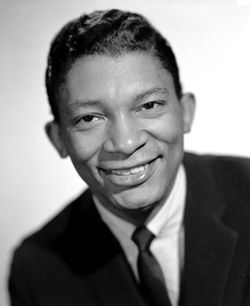 Though he was never the most distinctive vocalist, Johnny Hartman rose above others to become the most commanding, smooth balladeer of the 1950s and ’60s, a black crooner closely following Billy Eckstine and building on the form with his notable jazz collaborations, including the 1963 masterpiece John Coltrane and Johnny Hartman. Born in Chicago, he began singing early on and performed while in Special Services in the Army. Hartman studied music while at college and made his professional debut in the mid-’40s, performing with Earl Hines and recording his first sides for Regent/Savoy. After Hines’ band broke up later in 1947, Hartman moved to the Dizzy Gillespie Big Band and stayed for two years, recording a few additional sides for Mercury as well. Though he was never the most distinctive vocalist, Johnny Hartman rose above others to become the most commanding, smooth balladeer of the 1950s and ’60s, a black crooner closely following Billy Eckstine and building on the form with his notable jazz collaborations, including the 1963 masterpiece John Coltrane and Johnny Hartman. Born in Chicago, he began singing early on and performed while in Special Services in the Army. Hartman studied music while at college and made his professional debut in the mid-’40s, performing with Earl Hines and recording his first sides for Regent/Savoy. After Hines’ band broke up later in 1947, Hartman moved to the Dizzy Gillespie Big Band and stayed for two years, recording a few additional sides for Mercury as well.
Johnny Hartman’s first proper LP came in 1956 with Songs From the Heart, recorded for Bethlehem and featuring a quartet led by trumpeter Howard McGhee. He recorded a second (All of Me) later that year, but then was virtually off-record until 1963, when his duet album John Coltrane and Johnny Hartman appeared on Impulse. A beautiful set of ballad standards, including top-flight renditions of “Lush Life” and “My One and Only Love,” the album sparked a flurry of activity for Hartman, including two more albums for Impulse: 1963’s I Just Dropped by to Say Hello and the following year’s The Voice That Is. During the late ’60s and early ’70s, he recorded a range of jazz and pop standards albums for ABC, Perception, and Blue Note. Hartman recorded sparingly during the 1970s, but returned with two albums recorded in 1980, one of which (Once in Every Life) earned a Grammy nomination just two years before his death in 1983.
Bio from allmusic.com
Posted in Artist of the Month | 7 Comments »
Wednesday, January 23rd, 2013
WNCU will air four 60-minute specials each Monday night in February to honor Black History Month. Each show will air at 9pm.
Feb. 4
NPR’s Jazz Profiles-Johnny Hartman, Balladeer and featured artist for February at WNCU
Feb. 11
Rev. William Barber, president of state NAACP, conversation with Kimberley Pierce Cartwright
Feb. 18
Heavenly Sight, A Vision of Blindness, from Artemis Media and Murray Street Productions
Feb. 25
Angela Davis-excerpts from various speeches and lectures, from PRI archives
Posted in Music News | 6 Comments »
Tuesday, January 1st, 2013
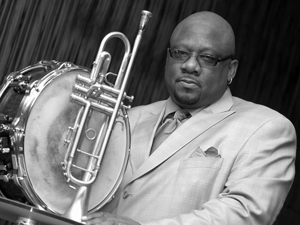 Ralph Peterson, Jr. (b. May 20, 1962, Pleasantville, New Jersey) is an American jazz drummer and bandleader. Ralph Peterson, Jr. (b. May 20, 1962, Pleasantville, New Jersey) is an American jazz drummer and bandleader.
Four of Peterson’s uncles and his grandfather were all drummers, and Peterson himself began on percussion at age three. He was raised in Atlantic City, where he played trumpet in high school and worked locally in funk groups. He applied to Livingston College, Rutgers, for drums but failed the percussion entrance exam, and enrolled as a trumpeter instead. In 1983, he joined Art Blakey’s Jazz messengers as the second drummer, playing with him for several years. He worked with Terence Blanchard and Donald Harrison in 1984, and with Walter Davis (1985, 1989), Tom Harrell (1985), Out of the Blue (1985–88), Branford Marsalis (1986), David Murray, Craig Harris (1987), James Spaulding (1988), Roy Hargrove (1989), Jon Faddis (1989), Dewey Redman and Mark Helias (1989), and Wynton Marsalis (with the Count Basie ghost band).
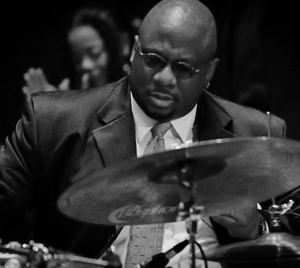
In the 1990s, Peterson played as a sideman with Jack Walrath, Craig Handy, Charles Lloyd, Kip Hanrahan (1992), Bheki Mseleku, Courtney Pine, Steve Coleman, George Colligan, Stanley Cowell, Mark Shim, and Betty Carter. He began recording as a leader around 1988, with a quintet V, or Volition, with Terence Blanchard, Steve Wilson, Geri Allen, and Phil Bowler. He also worked with Allen and Bowler as a trio in Triangular; Essiet Essiet replaced Bowler for their 1988 recording. In 1989 he recorded in quartet format as Fo’tet, with Don Byron, Steve Wilson (later Bobby Franchesini), Melissa Slocum (later Belden Bullock), and Bryan Carrott. After living in Canada for some time he returned to Philadelphia, where he worked further with Fo’Tet and also recorded as Triangular Too with Slocum and Uri Caine. He also led a group Hip Pocket, with whom he played trumpet.
Peterson has taught at Philadelphia’s University of the Arts.
Visit his website at www.ralphpetersonmusic.com.
Posted in Artist of the Month | 11 Comments »
Sunday, December 16th, 2012
As a music form born and bred in the United States, jazz has committed fans throughout the world. On January 14, 2013 at 7:30 p.m., EST, the National Endowment for the Arts, in partnership with Jazz at Lincoln Center, will hold its annual NEA Jazz Masters Awards Ceremony & Concert at Dizzy’s Club Coca-Cola, located at Jazz at Lincoln Center’s Frederick P. Rose Hall, in New York City. The NEA invites the nation’s jazz fans to join in celebrating the recipients of the nation’s top honor in jazz by watching the NEA Jazz Masters Awards Ceremony & Concert via live webcast. The NEA Jazz Masters Awards Ceremony & Concert will prominently feature NEA Jazz Masters, who will perform tributes to the 2013 honorees: Mose Allison, Lou Donaldson,Lorraine Gordon (A.B. Spellman NEA Jazz Masters Award for Jazz Advocacy), and Eddie Palmieri. The concert will begin at 7:30 p.m. EST and can be accessed by the public atarts.gov/jazzmasterswebcast as well as jalc.org/neajazzmasters. An archive of the webcast will be available the following day.
Wynton Marsalis, NEA Jazz Master (2011) and Jazz at Lincoln Center Managing and Artistic Director, will emcee the concert. NEA Jazz Masters Kenny Barron (2010), Ron Carter (1998), and Jimmy Cobb (2009) will make up a featured trio in an evening of performances that will also include Paquito D’Rivera (2005), Sheila Jordan (2012), Dave Liebman (2011), and Randy Weston (2001), as well as 2013 NEA Jazz Masters Mose Allison, Lou Donaldson, and Eddie Palmieri. Other NEA Jazz Masters in attendance at the concert include Muhal Richard Abrams(2010), David Baker (2000),), Benny Golson (1996), Chico Hamilton (2004), Roy Haynes(1995), Dan Morgenstern (2007), Jimmy Owens (2012), McCoy Tyner (2002), Cedar Walton(2010), and Phil Woods (2007).*
In addition to the live webcast, the concert will be broadcast live on WBGO Jazz 88.3FM, NPR Music, and SiriusXM Satellite Radio’s Real Jazz Channel XM67. A video archive of the concert will also be available at arts.gov/jazzmasterswebcast following the event.
*Performers and attendees are subject to change.
Live Webcast Viewing Parties
The live webcast of the 2013 NEA Jazz Masters Awards Ceremony & Concert on January 14, 2013 at 7:30 p.m. can be found both on the NEA’s website at arts.gov/jazzmasterswebcast as well as jalc.org/neajazzmasters. The NEA encourages households and schools to gather together to watch the webcast and use this opportunity to share our nation’s best jazz musicians with families and students. Viewers can engage in conversation with the broader community by sharing comments and photos on Twitter using the hashtag #NEAJazz. For more information on webcast viewing parties, including how to request copies of the 2013 NEA Jazz Masters publication, go to arts.gov/jazzmasterswebcast.
Photo Opportunity
At 5:00 p.m. on January 14, 2013, the 2013 NEA Jazz Masters and their fellow NEA Jazz Masters in attendance will gather for a group photo opportunity in the Agnes Varis and Karl Leichtman Studio in the Irene Diamond Education Center at Jazz at Lincoln Center, Broadway at 60th street, 5th floor, New York, NY. Members of the press who would like to participate in the photo opportunity must reserve a place in advance by contacting Liz Auclair at [email protected].Press are invited to watch the concert in the same location via a simulcast but must reserve a place
In addition, the NEA will service photos from the concert for press purposes. Contact Liz Auclair at [email protected] with any requests.
About NEA Jazz Masters
Each year since 1982, the Arts Endowment has conferred the NEA Jazz Masters Award to living legends in recognition of their outstanding contributions to jazz. With this new class, 128 awards have been given to great figures of jazz in America, including Count Basie, George Benson, Art Blakey, Dave Brubeck, Betty Carter, Ornette Coleman, Miles Davis, Roy Eldridge, Ella Fitzgerald, Dizzy Gillespie, Lionel Hampton, Herbie Hancock, Elvin Jones, John Levy, Abbey Lincoln, Max Roach, Sonny Rollins, Cecil Taylor, Sarah Vaughan, Nancy Wilson, and Teddy Wilson.
NEA Jazz Masters are selected from nominations submitted by the public and receive a one-time fellowship award of $25,000, are honored at an awards ceremony, and may participate in NEA-sponsored promotional, performance, and educational activities. One-hundred seventy-three nominations were considered for the 2013 NEA Jazz Masters. Only living musicians or jazz advocates (U.S. citizens or permanent residents) may be nominated for the NEA Jazz Masters honor.
The NEA has created numerous resources as part of the NEA Jazz Masters program, including:
- Video tributes, brief video tributes to recent NEA Jazz Masters’ lives and careers in jazz,
- Jazz Moments, 222 short audio pieces featuring musical excerpts and short interviews with NEA Jazz Masters,
- Podcasts with NEA Jazz Masters and other jazz figures about the history and current state of jazz,
- In-depth interviews with more than 45 NEA Jazz Masters,
- NEA Jazz in the Schools, a free, five-unit, online curriculum created in partnership with Jazz at Lincoln Center that explores jazz as an indigenous American art form and a means to understanding American history,
- NEA Jazz Masters Live grants to support performance and educational activities featuring NEA Jazz Masters, administered by Art Midwest.
In addition, the NEA supports the Smithsonian Jazz Oral History Program, an effort to document the lives and careers of NEA Jazz Masters. In addition to transcriptions of the hours-long interviews, the website also includes audio clips with interview excerpts of the artists’ early years; their first introduction to music and jazz; as well as their unique personal experiences in world of jazz.
The National Endowment for the Arts was established by Congress in 1965 as an independent agency of the federal government. To date, the NEA has awarded more than $4 billion to support artistic excellence, creativity, and innovation for the benefit of individuals and communities. The NEA extends its work through partnerships with state arts agencies, local leaders, other federal agencies, and the philanthropic sector. To join the discussion on how art works, visit the NEA at arts.gov.
Jazz at Lincoln Center is dedicated to inspiring and growing audiences for jazz. With the world-renowned Jazz at Lincoln Center Orchestra and a comprehensive array of guest artists, Jazz at Lincoln Center advances a unique vision for the continued development of the art of jazz by producing a year-round schedule of performance, education, and broadcast events for audiences of all ages. Under the leadership of Managing and Artistic Director Wynton Marsalis and Chairman Robert J. Appel, Jazz at Lincoln Center produces thousands of events each season in its home in New York City, Frederick P. Rose Hall, and around the world.
Posted in Music News | Comments Off on National Endowment for the Arts Announces Live Webcast of 2013 NEA Jazz Masters Awards Ceremony & Concert
Thursday, December 13th, 2012
HOW TO ENTER THE GIVEAWAY: No contribution or purchase is necessary.
Call 919-560-9628 between 8 am and 10 pm EST on December 14 – 16, 2012. Donate or email between 8am on December 14 and 11:59pm EST on December 31, 2012 .
Limit one (1) entry per person. Multiple entries will be disqualified.
ELIGIBILITY: Any US resident 21 years of age or older can enter the giveaway. Excluding persons who on or after December 1, 2012, were or are employees of WNCU, their immediate family or persons living in the same household. Void where prohibited by law.
PRIZE: One (1) prize winner will receive one (1) $500 Visa gift card. The $500 Visa gift card becomes the sole responsibility of the winner when it is collected. WNCU is not responsible for any fees, maintenance, replacement cost, lost or stolen cards and the like.
PRIZE REDEMPTION: To redeem the prize, simply come to the WNCU Office between 8am – 5pm, Monday through Friday on or after January 14, 2013. Present an official identification such as a driver’s license or a passport to verify your information.
The winner is responsible for any and all costs associated with using the prize, including but not limited to maintenance. Prize is nontransferable, is not good for cash, and cannot be exchanged for other merchandise. Winners will receive delivery of the prize as arranged by WNCU.
SELECTION AND NOTIFICATION OF WINNER: Every eligible entry will be included in the drawing. On January 11, 2013, one (1) winner and three (3) back up names will be randomly drawn from all eligible entries. The winner will be notified by e-mail or phone.
If WNCU is unable to reach a winner or a winner is unable to accept the prize by 5pm EST on January 31, 2013, the unawarded prize will go to the first available back up thereof until the prize is awarded. The rules detailing giveaway eligibility and method of selecting winners are on file at WNCU. The chances of winning are dependent upon the number of eligible entries.
GENERAL: By participating in this giveaway, participants agree to be bound by the Official Rules and that WNCU and related organizations, their agents and employees have no liability whatsoever for any injuries, losses, or damages of any kind which result from use of the prize, or by participation in the giveaway. WNCU or its related organizations may use winner’s name and likeness for advertising, fundraising, promotional or publicity purposes without further compensation. Expenses as a result of winning this prize are the responsibility of the winner.
RESTRICTIONS: By participating in this $500 Visa Gift Card Giveaway, a participant agrees to be bound by these Official Rules, and by all decisions of the giveaway sponsor.
SPONSOR: WNCU 90.7 FM, 1801 Fayetteville Street, Durham, NC 27707, 919-530-7445
Posted in Uncategorized | 2 Comments »
Thursday, December 6th, 2012
Sunday, Dec. 23 at 6am – Morehouse / Spelman Glee Clubs Christmas Special
One of the great holiday traditions in America, the choirs of Morehouse and Spelman Colleges — two of the most prestigious historically black institutions in the nation — get together to present a spine-tingling concert program. This year’s program features the best works of the last several years. It’s a joyous celebration of the schools’ tradition of singing excellence, with their trademark mixture of spirituals and carols. Korva Coleman hosts.
Monday, Dec. 24 at 9 pm – Joy to the World
Joy to the World is a one-hour live performance holiday jazz program hosted by pianist Bob Thompson. Produced by West Virginia Public Broadcasting in Charleston, WV for 16 years, the show is performed before a consistently sold-out audience at Charleston’s Cultural Center Theater. Joy To The World has traditionally been the kickoff to the holiday season in Charleston. Each year Bob invites a guest vocalist to join his band to add some swing to the holiday special.
This year’s Joy to the World features special guest vocalist Dwight Lenox. Growing up in New York, Dwight honed his talent in the church choir. He went on to study and perform musical styles as diverse as country and rock ‘n’ roll. But his gospel roots, combined with such childhood influences as Nancy Wilson, Nat Cole and Sarah Vaughn, made jazz a natural showcase for his talent. For Joy To The World, Thompson applies his expansive jazz vocabulary to some favorite holiday tunes, adding a fresh perspective to the songs that evoke those well-known feelings of the season. The individuality of the guest vocalist always plays a unique role in the interpretation and arrangement of the holiday material, making each year’s performance as fresh as the season’s first snow.
Tuesday, Dec.25 at 8pm – Jazz Piano Christmas
NPR Music brings you another great concert from the John F. Kennedy Center for the Performing Arts. NEA Jazz Master Ellis Marsalis, Jason Moran, Geri Allen, Taylor Eigsti, and other artists perform their favorite holiday songs.
Tuesday, Dec. 25 at 9pm – Big Band Christmas
Make the holidays merry and bright with this swinging Yuletide concert by the Kansas City Jazz Orchestra. In a city known for jazz, the Kansas City Jazz Orchestra features some of the city’s finest jazz musicians. The orchestra’s annual Christmas concert features a bounty of seasonal favorites, done in sparkling big band arrangements. This year’s show includes standards like The Most Wonderful Time of the Year, Let It Snow, Sleigh Ride and The Christmas Song, plus a dash of KC blues in the Santa Claus Blues, along with Donny Hathaway’s This Time of Year. Joining the orchestra are vocalists Ron Gutierrez and David Basse. Recorded live at historic Liberty Hall in Lawrence, KS.
Wednesday, Dec. 26 at 9pm – “A Season’s Griot”
“A Season’s Griot” is public radio’s only nationally syndicated Kwanzaa program. Hosted by acclaimed storyteller Madafo Lloyd Wilson, this annual one-hour special captures the tales and traditions of African-American and African peoples.
Monday, Dec. 31 from 9pm to 4am on Tuesday, Jan. 1 – NPR’s Annual Toast of the Nation
To celebrate 2012 and ring in 2013, Toast of the Nation is music all night from coast to coast, with midnights in the four continental US time zones. Remember: you can repeat Toast of the Nation all day New Years Day. Toast of the Nation is co-produced by WBGO Jazz 88 in Newark and NPR Music. Artists TBA soon.
Posted in Music News | 2 Comments »
Wednesday, December 5th, 2012
Dave Brubeck, the legendary jazz pianist and composer, known for defying jazz conventions and for recordings like “Take Five” and “Blue Rondo a la Turk,” has died.
Brubeck died of heart failure in Norwalk, Conn. He was one day short of his 92nd birthday.
His All Music biography says Brubeck distinguished himself from the popular jazz musicians of the West Coast by playing unusual time signatures, “adventurous tonalities,” and proving that complex music could find a larger audience.
Perhaps a testimony of that was that in 1954, Brubeck became only the second jazz musician ever featured on the cover of Time Magazine. The first? Louis Armstrong.
Born Dec. 6, 1920, Brubeck grew up on a 45,000-acre ranch in California and he came to music through a circuitous route. In a 1999 interview with Fresh Air’s Terry Gross, he said his first love was rodeo roping. But his mother, who spotted a special talent when he sat at the piano, insisted he not rope anything larger than a yearling.
“She didn’t want my fingers to become hurt,” Brubeck said. “My uncle, who was also a rodeo roper, got his finger caught between the saddle horn and the rope, and it took his finger off. And he used to kid the other cowboys and say, ‘I would’ve been a great pianist like my nephew Dave, had I not lost this finger.'”
Brubeck went on to college but a zoology teacher told him he should focus on what he had spotted as his true love: Music. So Brubeck started taking classes at Mills College in Oakland, California, except there was one huge problem — Brubeck never learned to read music and the dean at the college threatened not to let him graduate.
“But when some of the younger teachers heard this, they went to the dean and said, ‘You’re making a big mistake, because he writes the best counterpoint that I’ve ever heard,'” Brubeck said. “So they convinced the dean to let me graduate. And the dean said, ‘You can graduate if you promise never to teach and embarrass the conservatory.’ And that’s the way I’ve gotten through life, is having to substitute other things for not being able to read well. But I can write, which is something very few people understand.”
NPR’s Felix Contreras tells our Newscast unit that Brubeck’s “Take Five,” released in 1959, changed jazz “by adding an extra beat to jazz’s standard 4/4 time.”
As Hedrick Smith wrote for PBS, “Take Five” was in 5/4 time and other songs in the “Time Out” album were just as odd. “Blue Rondo a la Turk” was in 9/8 time.
Critics didn’t like it and Brubeck even lost some gigs for playing those odd time signatures and for his use of polytonality.
Smith reports:
“‘Much of the earlier European music was in one tonality,’ Brubeck explains. ‘We’ve become so used to that. Gradually musicians and composers wanted to stretch that and get it more complicated.’ But as Brubeck remembers, it took some time for his unique approach to catch on. ‘I wrote [a piece] for Stan Kenton when I was 22 that had some polytonality, called Prayer of the Conquered,’ Brubeck recalls. ‘He said ‘Bring it back in 10 years.’ He thought it was complicated.'”
In the end, however, the masses embraced Brubeck. “Time Out” sold more than a million copies and became the first jazz record to hit gold.
Originally posted on NPR
Click here to read The New York Times article.
Posted in Music News | 6 Comments »
Saturday, December 1st, 2012
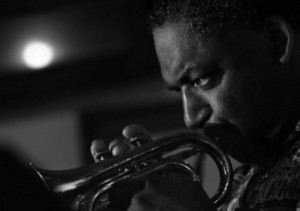 Roy Campbell, Jr. was born in Los Angeles in 1952 and grew up in New York. His musical journey began as a child with piano lessons, initially inspired by his father, whose trumpet was the first one he used. By the time he entered high school, young Roy was playing flute, recorder, and violin, and he began studying trumpet as a high-school senior. Roy Campbell, Jr. was born in Los Angeles in 1952 and grew up in New York. His musical journey began as a child with piano lessons, initially inspired by his father, whose trumpet was the first one he used. By the time he entered high school, young Roy was playing flute, recorder, and violin, and he began studying trumpet as a high-school senior.
In 1971, Roy began participating in Jazzmobile workshops, working with jazz masters Kenny Dorham, Howard McGhee, and Lee Morgan, as well as with Howard McGhee and Joe Newman in Jazz Interactions workshops.
Later, as a trumpet major at Manhattan Community College, his professors were Leonard Goines and Dick Vance, and Roy studied music theory, arranging, and composition with Yusef Lateef, graduating in 1975 with an Associate’s Degree in music.
Roy Campbell’s life experience reflects his belief that music is the voice of universal truth. His music has continued to grow throughout the ‘9O’s and into the new millennium. His sound combines ancestral voices, modern artistry, and futuristic vision. He is a master trumpeter, musician, composer and arranger, and a universal force to be reckoned with.
Click here to learn more.
Posted in Artist of the Month | 4 Comments »
|
 Trumpeter, composer and educator Donald Byrd, one of the most important, widely recorded and versatile jazz musicians to come roaring out of Detroit during the city’s golden age of bebop in the 1950s, has died at age 80.
Trumpeter, composer and educator Donald Byrd, one of the most important, widely recorded and versatile jazz musicians to come roaring out of Detroit during the city’s golden age of bebop in the 1950s, has died at age 80.

 Though he was never the most distinctive vocalist, Johnny Hartman rose above others to become the most commanding, smooth balladeer of the 1950s and ’60s, a black crooner closely following Billy Eckstine and building on the form with his notable jazz collaborations, including the 1963 masterpiece John Coltrane and Johnny Hartman. Born in Chicago, he began singing early on and performed while in Special Services in the Army. Hartman studied music while at college and made his professional debut in the mid-’40s, performing with Earl Hines and recording his first sides for Regent/Savoy. After Hines’ band broke up later in 1947, Hartman moved to the Dizzy Gillespie Big Band and stayed for two years, recording a few additional sides for Mercury as well.
Though he was never the most distinctive vocalist, Johnny Hartman rose above others to become the most commanding, smooth balladeer of the 1950s and ’60s, a black crooner closely following Billy Eckstine and building on the form with his notable jazz collaborations, including the 1963 masterpiece John Coltrane and Johnny Hartman. Born in Chicago, he began singing early on and performed while in Special Services in the Army. Hartman studied music while at college and made his professional debut in the mid-’40s, performing with Earl Hines and recording his first sides for Regent/Savoy. After Hines’ band broke up later in 1947, Hartman moved to the Dizzy Gillespie Big Band and stayed for two years, recording a few additional sides for Mercury as well. Ralph Peterson, Jr. (b. May 20, 1962, Pleasantville, New Jersey) is an American jazz drummer and bandleader.
Ralph Peterson, Jr. (b. May 20, 1962, Pleasantville, New Jersey) is an American jazz drummer and bandleader.

